So, you’re interested in using polls to drive audience engagement and show your readers exactly what you have to offer when it comes to answering tough questions. Now, you want to get a sense of the advantages of using polls as part of your social media strategy.
You’ve come to the right place! Let’s dive right in.
First, what is a poll? In a nutshell, a social media poll is a great way to build community, facilitate discussion and get feedback from your social media following. Interested to hear how your audience feels about The Great Resignation, or where they stand on the age-old fridge vs. cupboard ketchup debate? Poll them!
But before we get to the juicy parts of implementing polls in your social media strategy, let’s just run through how different platforms allow you to set up a poll.
Table of Contents:
- Social Media Polls 101
- Five advantages of using polls in your social media strategy
- Six tips for incorporating polls into your social media strategy
- What should you be measuring to assess the success of your poll?
Social Media Polls 101
LinkedIn offers you the options of a question with a choice of between two to four answers. You can also set the poll duration, the default being a week, and the votes and duration are visibly displayed in the post for all to see. LinkedIn also offers you the option of linking recent studies or paragraphs as context for your poll.
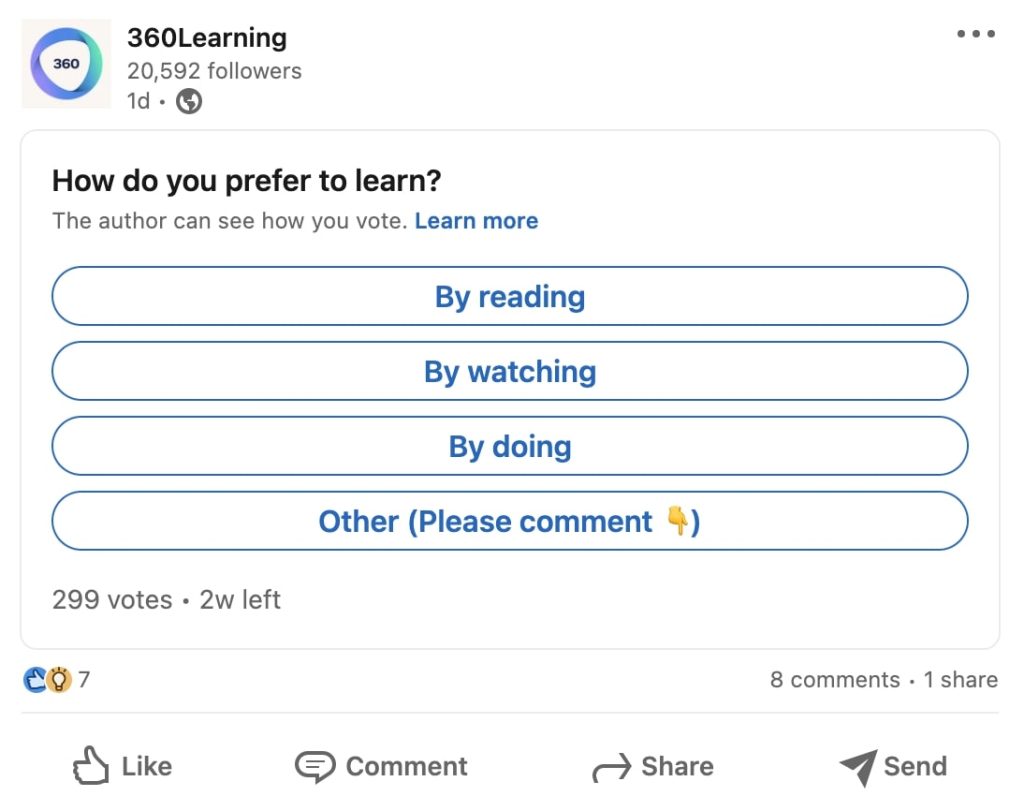
On Twitter, your poll can also have up to four options, but the maximum duration of a poll is set at seven days. The live vote count and remaining time of the poll are displayed under the poll choices.
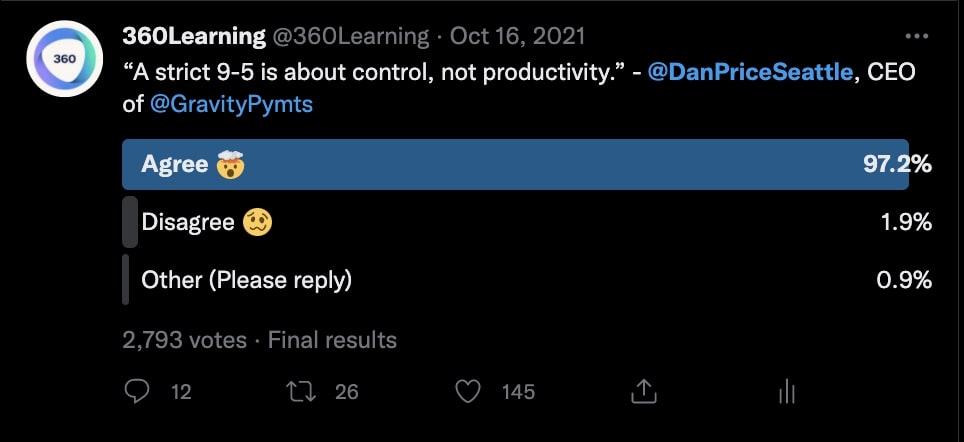
On other platforms like Instagram and TikTok, polls feature a question with a yes or no option or a this or that option. Instagram allows you to create a poll in Stories and you get to see how many viewers your story has had plus who voted and how many votes each answer option received.
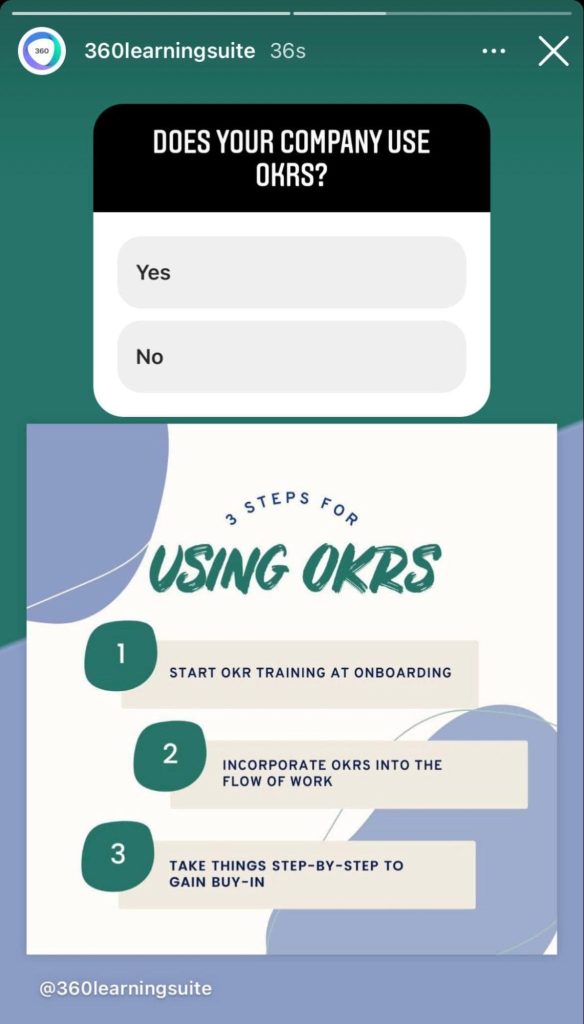
Excited yet? Great, let’s explore the advantages of using polls in your social media strategy.
Five advantages of using polls in your social media strategy
There are many different reasons why polls are important to your social media strategy. Here are five significant advantages of using polls to get your strategy planning underway.
1. Polls help gauge your audience
Interested to know where your audience sits on a particular subject? A poll can indicate where your audience sits on a trending topic, and by replicating a poll across platforms, you can gauge your audience’s reactions from platform to platform.
For instance, on LinkedIn, we were able to have a poll set up about our Great Resignation study and gauge whether our LinkedIn audience was engaging with the survey that we did on the backend.
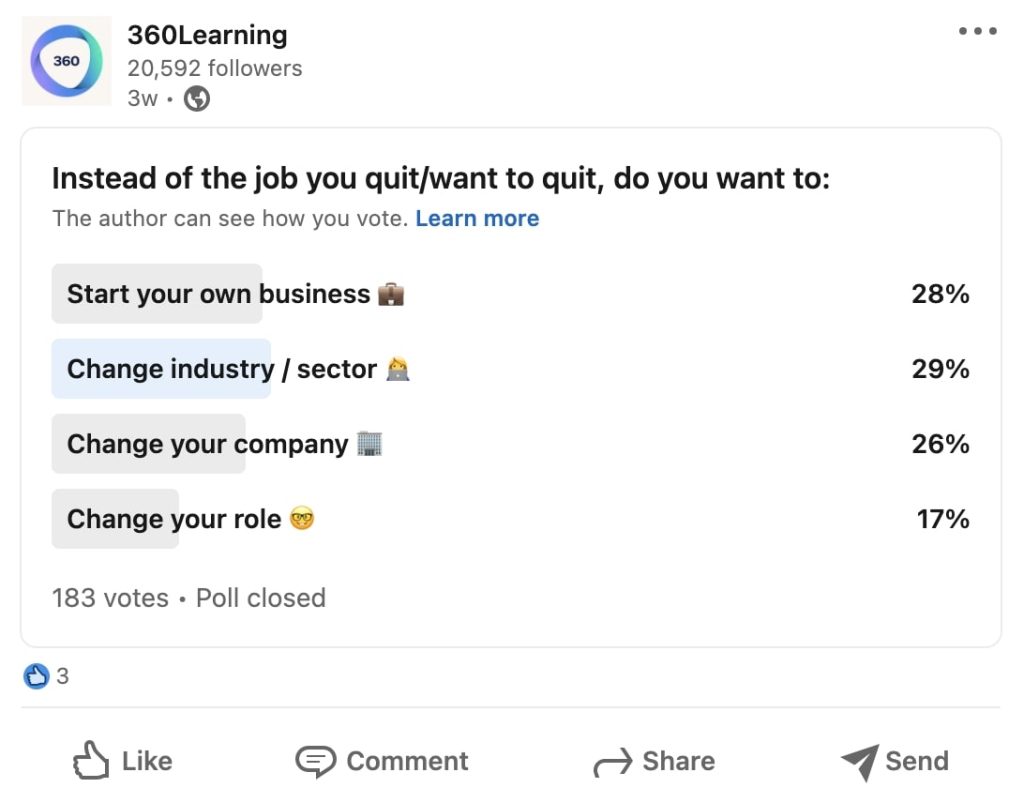
2. Polls are clickable
Polls are simple and a great way to get your audience engaged in your content without asking them to leave the convenience of their feed and the digestible content that they want to dedicate themselves to reading. In this case, you will probably get more poll votes than reactions to your posts.
3. Polls are organic
You can’t try and get people into your content by paying them to respond to polls. This means that polls create a genuine interaction that helps you build true community and bring brand awareness together.
People really like talking about themselves and if they can respond to a poll and feel like they’re being heard with a simple click, that’s a really nice way for them to do so.
4. Polls get a lot of impressions
Polls get a lot of reach and votes. Because they are shown to such a wide audience, they garner a lot of answers. Technically, they do have a lower engagement rate, however, you’re still getting higher numbers of engagements based on the amount of people responding and interacting with your content than you would on a normal post.
For example, on LinkedIn, 360Learning’s polls have a cover of around 3% to 5% engagement rate, and our posts normally hover around 6% engagement rate which can go up to 22% depending on what the content includes.
5. Polls give you the perfect way into a conversation
Social media is all about brand awareness and is typically used for top of funnel activity. If you want to reach people, and you do, you lure them in with polls and get them excited about your content.
If your poll is interesting enough, a user will likely give your company a follow and read a piece of your content after submitting their vote. Once they follow you, they will see the recommended percentage of content you post about your product/service.
Now that we know some of the very good reasons for using polls in your social media strategy, what are some ways of effectively incorporating them?
Six tips for incorporating polls into your social media strategy
1. Use polls to carry out research
A lot of people have posted polls that are thought-provoking and very much in line with the way I was thinking about certain topics, such as the Great Resignation or other different global cultural pieces that we’re discussing as a community.
With LinkedIn specifically, you can follow and facilitate discussion as you can add long-form content to back up your poll. For example, a couple of paragraphs on why you’re asking about remote working or reference studies on these cultural pieces, and then design your poll around a question like, are you part of the Great Resignation?
2. Focus on trending topics
You definitely want to count how many impressions you have per poll. For increased impressions, you should focus on broad and trending topics, for example, the Great Resignation or Burnout, as these will reach wider audiences as opposed to more niche topics.
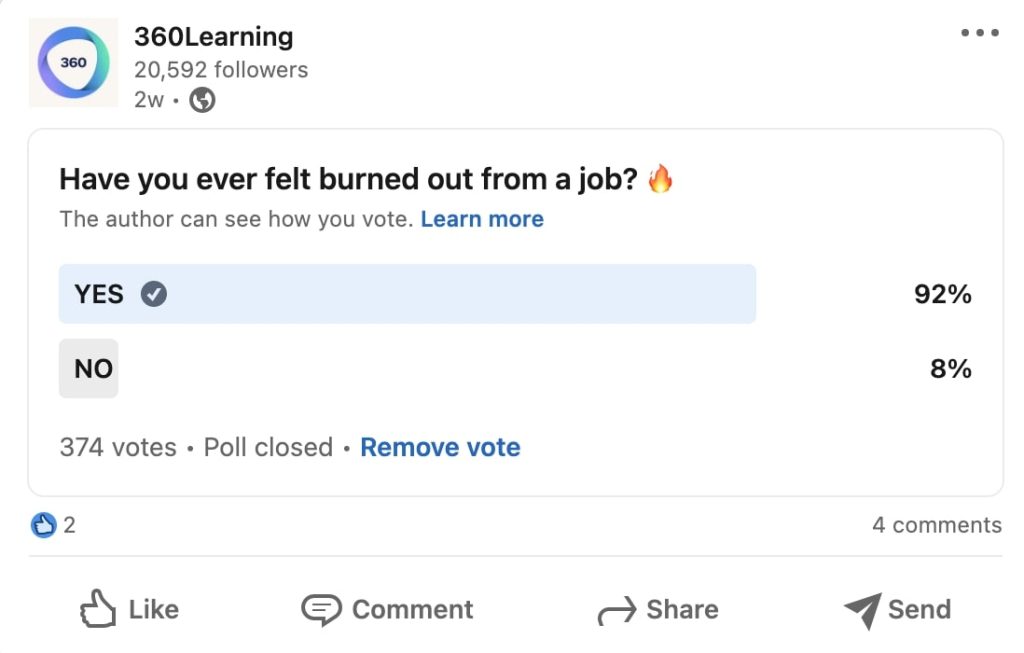
On LinkedIn, pay attention to News Roundups. If you create a poll about a topic everyone is talking about right now, you might get a mention on the platform’s News Roundups which is seen by thousands of people.
3. Be thought-provoking with your polls
Be controversial. This is a great way to start conversations going back and forth in the comments. Look at how many comments your poll got and ask yourself if it is engaging enough to start a conversation or do people just want to click and scroll by?
Also, be fun with your polls. They are a great way to solidify your social media following’s loyalty to your brand. This is reinforced again by creating those conversations and building your community. But they should also be thought-provoking. This helps gauge enough interest for new audiences to check out your brand.
Specifically, on LinkedIn, you can see who has engaged with your poll and find out a little about them. Send them a direct message with a piece of relevant content (not sales-related) that can help build trust and show that company’s expertise on a certain topic. However, ensure this comes from a human being like your social media manager, and not the company.
4. Be market-specific with your poll design
Make sure your poll is market-specific. Focus on the trending topics in the countries or languages you’re operating in. Doing so ensures that your polls are culturally relevant and aligned to the content your content team has produced for each market. This also helps you build brand loyalty with the country or countries you wish to grow in.
5. Going live with your poll
Your poll is now researched, designed, controversial, and fun. But when and how long should you post a poll, you ask? I like to leave a poll live for one to two weeks because it gives the poll more time to be seen in content feeds and it allows for the audience size and type to grow.
As for what time you should post your poll, there is no best practice so long as your audience is online. I’ve tested this out quite a bit, and because I leave polls up for one to two weeks, they will be seen at different times for different people.
6. Attract new talent with your polls
For LinkedIn specifically, polls are a great way of attracting new talent. They are an effective way to showcase your company’s culture, such as remote working, to applicants who are looking for new roles.
Using the messaging example from above, you can begin a private conversation about how you work as a company, how you work as a brand and get the applicant’s thoughts stirred and thinking if they would be a great fit for your company. This is all private so it doesn’t call them out in front of their current employer.
What should you be measuring to assess the success of your poll?
Now that you’re a poll aficionado, you’ll be wanting to know how to measure whether your polling strategy is having the desired impact. So, what are you looking for to know if your polls are helping your strategy?
You definitely want to be counting how many impressions you have per poll, as well as how many reactions you have per poll. If you have 2,000 votes on a trending topic, that’s a great poll.
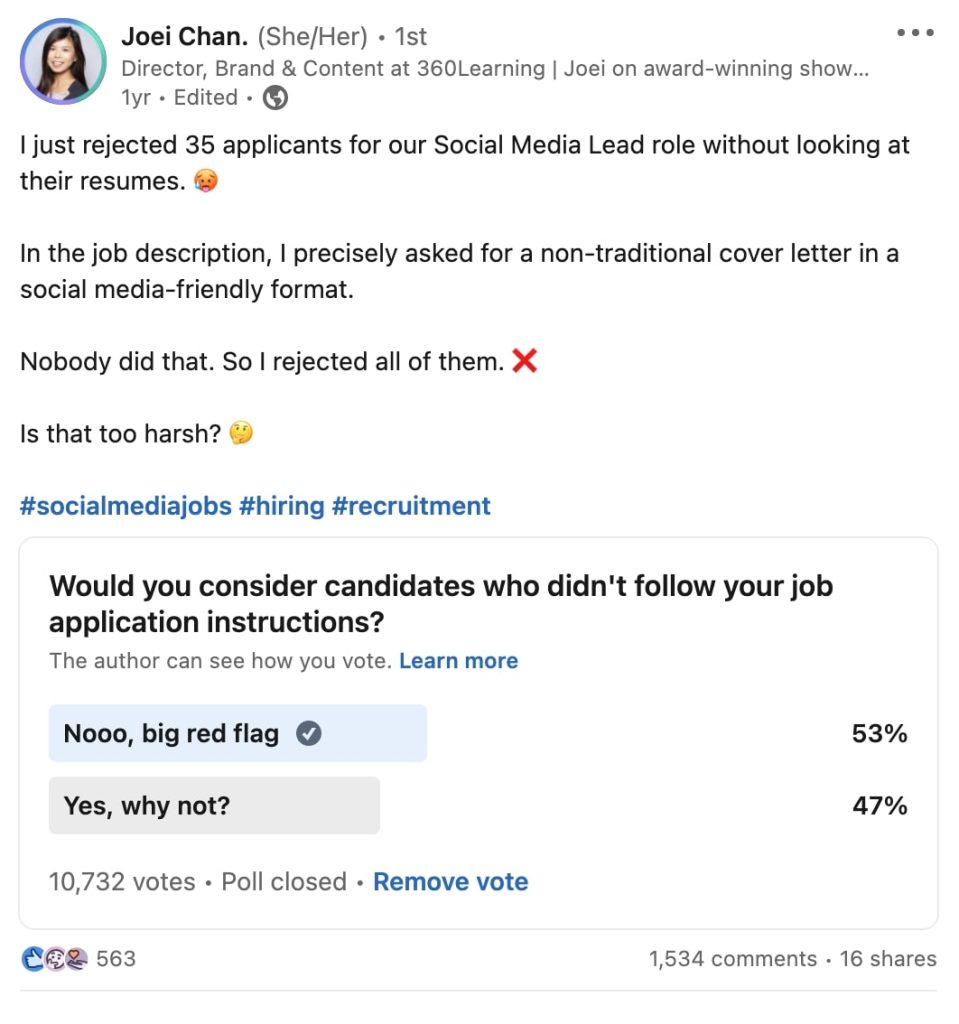
Is your poll starting a conversation? If so, you should also be accounting for how many comments it has and be getting an idea of the discussion going back and forth. How many comments did your poll get? Is it engaging enough to start the conversation or are people just scrolling by?
When it comes to engagement, don’t be too worried if your engagement rate decreases as polls tend to get high impressions. When polls are shared with a wider audience, it’s likely the engagement rate goes down but you’ll likely still get a higher amount of engagements in terms of votes than you would on a normal post.
For example, 360Learning polls tend to hover at 3-5% engagement rate, while posts can go from 6%-20% engagement rate. That’s because they’re shown to a smaller audience.
However, if you are someone that cares very specifically about your overall monthly engagement rate and have very high goals for what those engagement rates are, I would limit the amount of polls if impressions and brand awareness are not your focus.
I hope this guide has given you all the insights and inspiration you need to get out and get polling. And speaking of polls, did you a) love this post or b) adore this post? Be sure to let me know!






